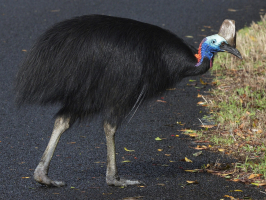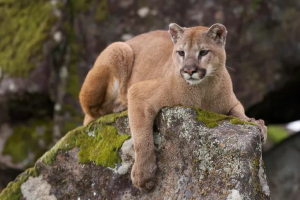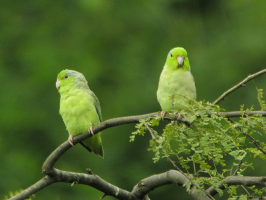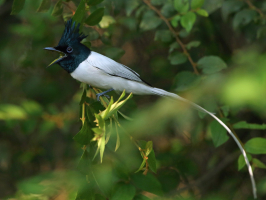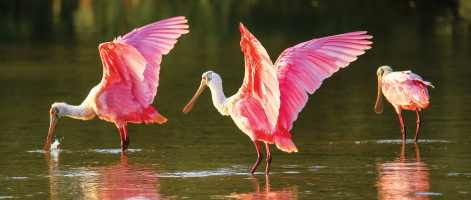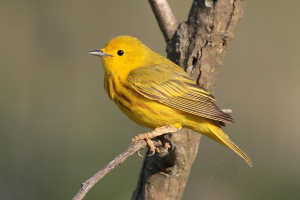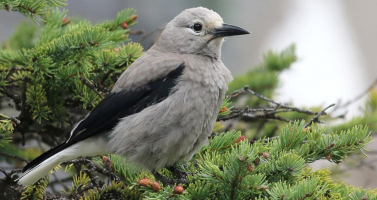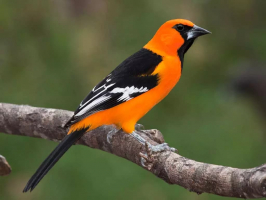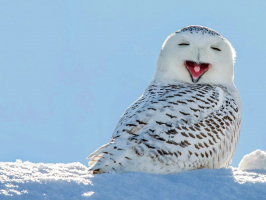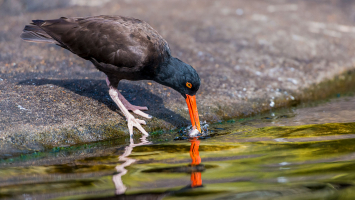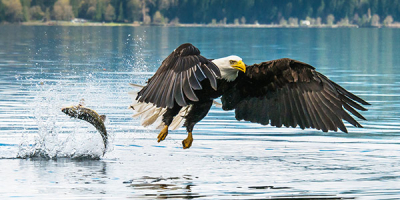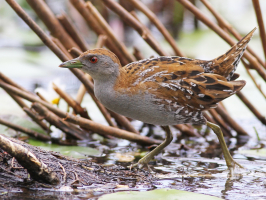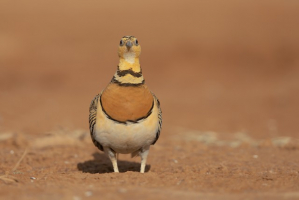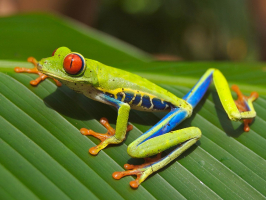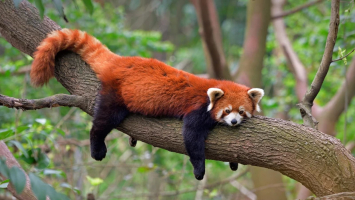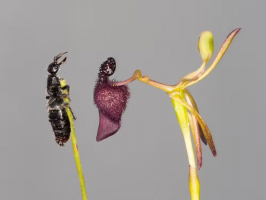Top 10 World's Beautiful Small Brown Birds
You might have noticed many brown birds around you. These small creatures are so unique that you can spend your entire day looking at them. Most of them belong ... read more...to the Sparrow family. However, there are some birds commonly confused with male or female House Sparrows. Below is a list of the most beautiful small brown birds in the world, let's find out!
-
The American Tree Sparrow (Spizelloides arborea), also known as the winter sparrow, is a medium-sized new world sparrow. It had been classified under the genus Spizella, but multilocus molecular evidence suggested placement in its own genus. When not nesting, these birds feed on the ground or in low shrubs, frequently in swarms. They primarily consume seeds and insects, though they occasionally consume berries as well. They frequently hang around feeders with dark-eyed juncos.
Adults have a grey underpart with a small dark mark on the breast, along with a red crown. They have a thin tail, brown wings with white bars, and a back that is rusty with lighter stripes. They have a rusty line through their eye and a grey face. Light brown spots are scattered throughout their flanks. They resemble chipping sparrows in appearance. As a result, they are also sometimes referred to as the winter chippy. Tundra or the northernmost reaches of the boreal forest in Alaska and northern Canada serve as their nesting grounds. They construct a ground nest.
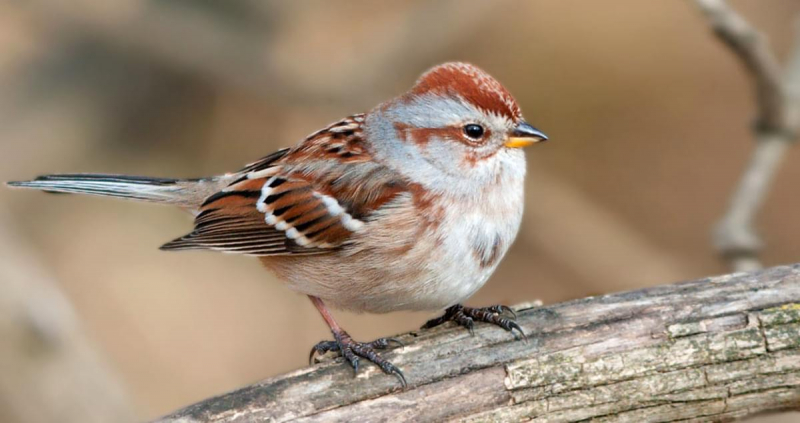
All About Birds 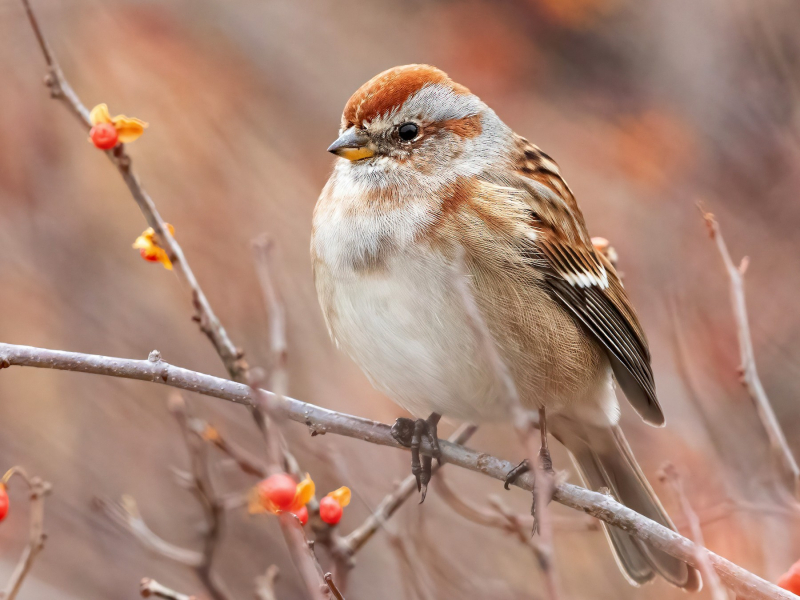
eBird -
The Carolina Wren (Thryothorus ludovicianus) is a common species of wren that is a resident in the eastern half of the United States of America, the extreme south of Ontario, Canada, and the extreme northeast of Mexico. While favorable climatic circumstances cause their breeding area to be extended further north, harsh winters limit their range's northern boundaries. Their preferred habitat is deep cover found in forests, on the margins of farms, and in suburbia. South Carolina's official bird is a wren.
The rump and upper tail coverts of T. l. ludovicianus have a richer, more chestnut-colored tint than the crown. With numerous tiny white spots on the lower primary coverts, the shoulders and greater coverts are a rich brown color. The bars on the primaries are only on the outer webs, but they are darker and more pronounced. The secondary coverts are rich brown with a deeper brown barring on both webs. The rectrices are brown with 18 to 20 bars that span across the tail. The black above and below the white supercilious streak's tiny border reaches above and beyond the animal's shoulders. The ear coverts have gray and grayish-black speckling. It has a grey chin and throat, which turn buff on its chest, flank, and belly, the latter two of which are a warmer color. A buffy whitish tint is present on the underwing coverts. It has a reddish-brown iris, a lemon-colored upper mandible, and a paler lower mandible.
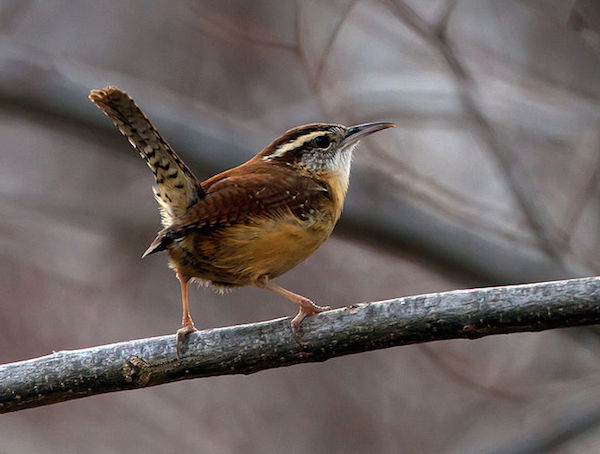
All About Birds 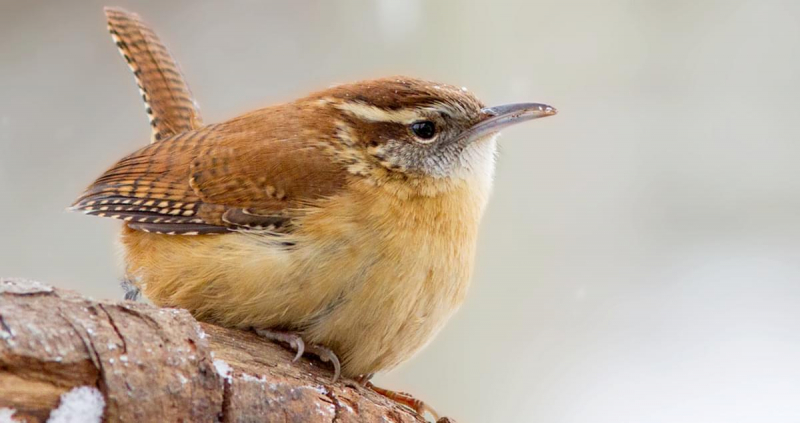
All About Birds -
Cassin's Finch (Haemorhous cassinii) is a bird in the finch family, Fringillidae. This species and the other "American rosefinches" are placed in the genus Haemorhous. Their preferred breeding environment is coniferous woodland, which may be found in the highlands of western North America as far south as northern New Mexico and Arizona, as well as in Southern California close to Baja California. Large conifers serve as their nesting sites. During the winter, they descend to lower elevations. Many birds are permanent inhabitants, but some of the species' northernmost breeding birds move south as do other birds throughout the species' range. As far south as central Mexico, some non-breeding birds spend the winter.
Adults have brown wings and a short, forked brown tail. Compared to the purple finch, they have a longer bill. The head, breast, back, and rump of adult males are raspberry red; their back and undertail are streaked. Adult female purple finches have less pronounced facial markings than female purple finches. They have light brown upper parts and light underparts with brown streaks throughout. They mainly eat seeds, buds and berries, and some insects. When not nesting, they often feed in small flocks.
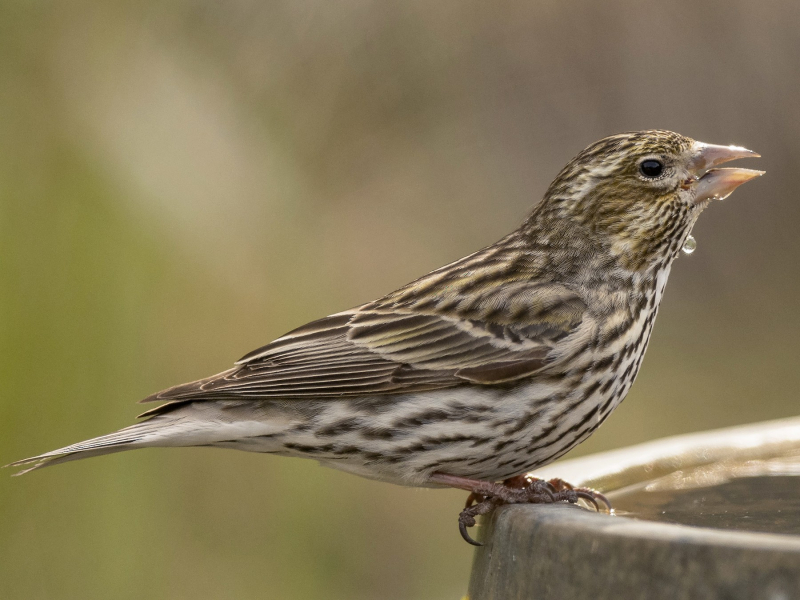
eBird 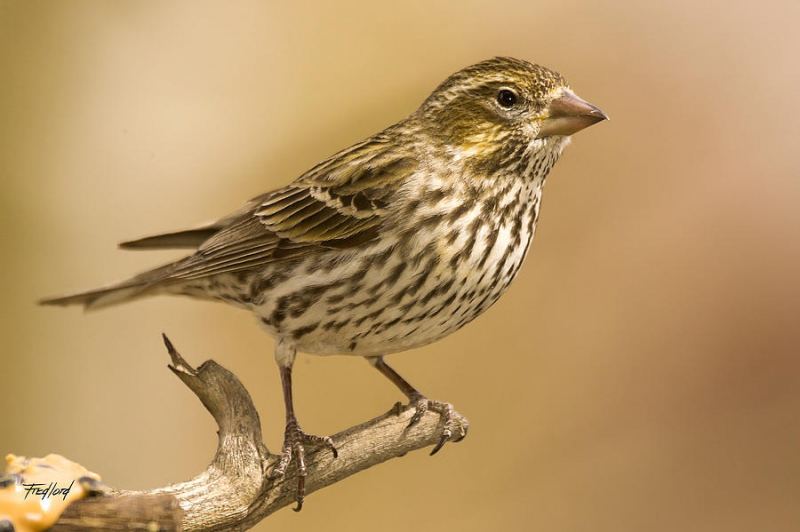
Fine Art America -
The Chipping Sparrow (Spizella passerina) is a species of new world sparrow, a passerine bird in the family Passerellidae. It is widespread, fairly tame, and common across most of its North American range. Chipping sparrows are social in the winter and form flocks, occasionally interacting with other bird species. In addition to clambering up plants and trees to feed on buds and tiny arthropods, they mostly graze on the ground for seeds and other food items. They prefer coniferous forests in the west of their breeding region, whereas in the east, they prefer woodland, farms, parks, and gardens. The nest is frequently constructed in a tree, and breeding begins in late April or early May.
Adults are gray underneath and an orangish-rust color above throughout the year. Adults have a reddish crown, a nearly white supercilium, and a black trans-ocular line in their alternative (breeding) plumage, running through the eye. Adults in basic (nonbreeding) plumage have a brownish crown, a dusky eyebrow, and a dark eyeliner but are less pronouncedly marked. Below, juvenile chipping sparrows have distinct streaking. They exhibit a dark eyeliner that extends both in front of and behind the eye, much like non-breeding adults. Although variable, the dusky brow and brownish crown are typically hidden in juveniles.
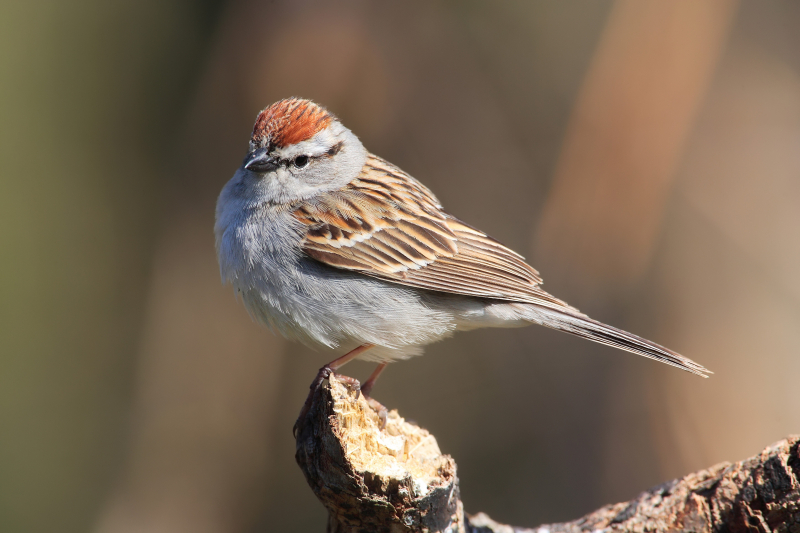
Wikipedia 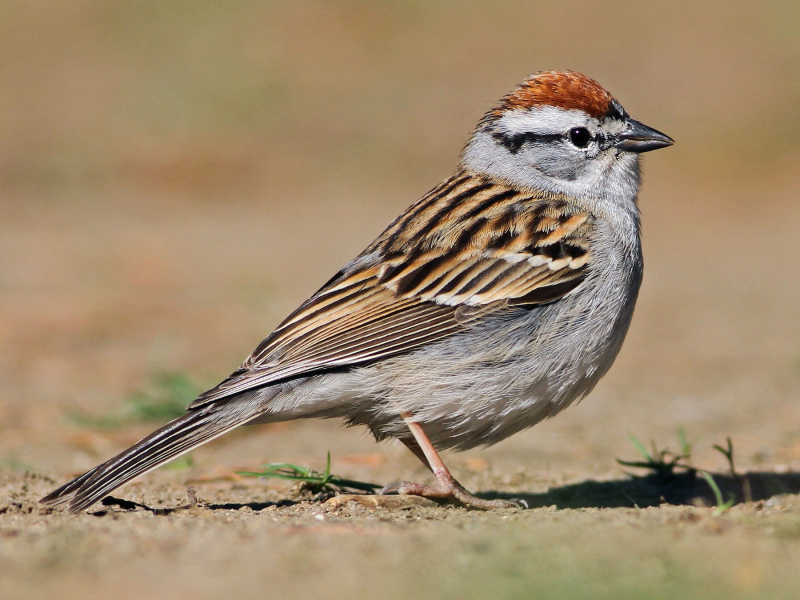
eBird -
The Brown-Headed Cowbird (Molothrus ater) is a small, obligate brood parasitic icterid native to temperate and subtropical North America. It is a permanent resident in the southern parts of its range; northern birds migrate to the southern United States and Mexico in winter, returning to their summer habitat around March or April. These birds forage on the ground, often following grazing animals such as horses and cattle to catch insects stirred up by the larger animals. They mainly eat seeds and insects.
The brown-headed cowbird has a general icterid shape but is characterized by its smaller size and head and beak that resembles a finch. The adult male has a brown head and is iridescent black in hue. The mature female is significantly smaller, dull-gray with a throat that is pale, and her underparts have extremely fine striping. Their average wingspan is 36 cm, and their overall length ranges from 16 to 22 cm. Body weights can range from 30 to 60 g, with women weighing on average 38.8 g compared to men's average of 49 g.
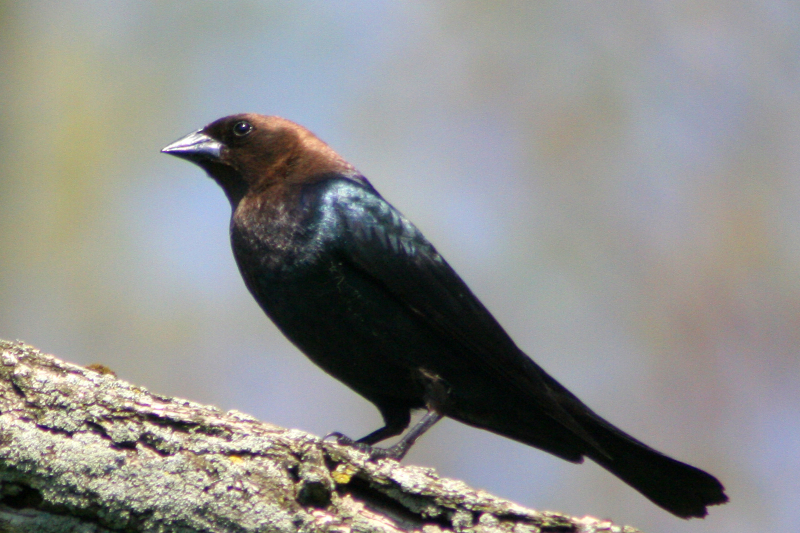
Wikipedia 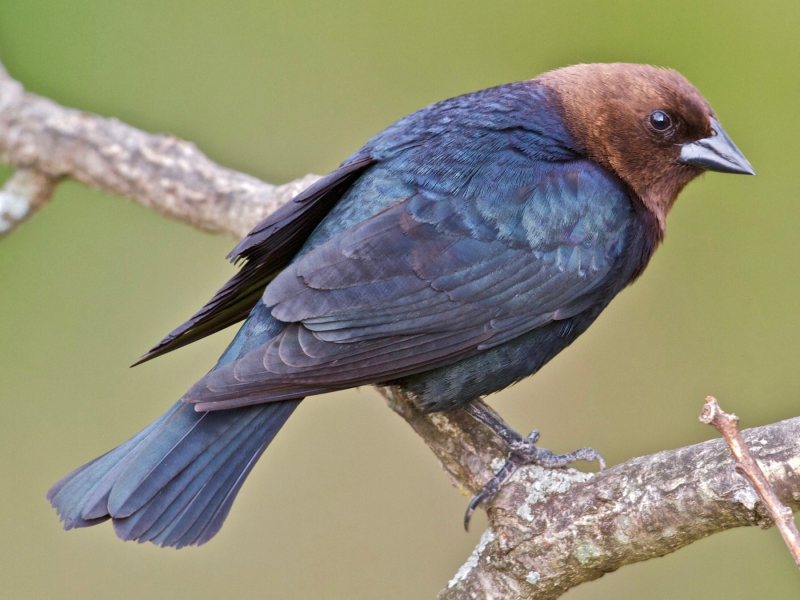
eBird -
The House Wren (Troglodytes aedon) is a very small songbird of the wren family, Troglodytidae. The most widely distributed native bird in the Americas, it can be found from Canada to the southernmost tip of South America. It is the most prevalent wren and may be found in most residential areas within its range. Due to its extremely complicated taxonomy, certain subspecies groups are frequently regarded as different species. The word troglodytes, which refers to a bird that hides in cracks to hunt for insects or find refuge, is from the Greek and means "hole dweller".
Adults are 10 to 12 g in weight, 11 to 13 cm long, and have a 15 cm wingspan. The wing chord ranges from 4.7 to 5.3 cm, the tail from 3.9 to 4.4 cm, the culmen from 1.1 to 1.3 cm, and the tarsus from 1.6 to 1.8 cm, according to conventional measurements. The underparts of the subspecies range from brown, over buff, and pale grey, to pure white, while the upperparts range from drab greyish-brown to rich rufescent-brown. All of the subspecies have blackish bars on their wings, tails, and in some cases, their flanks as well. All subspecies have a slight eye ring and eyebrow, a long, thin bill, an upper jaw that is blackish, and a lower mandible that is yellowish or light grey with a black tip.
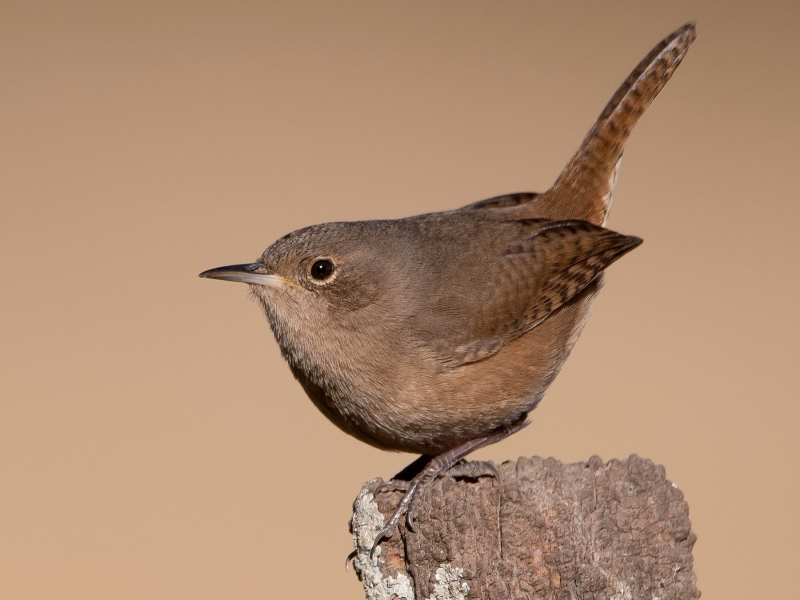
eBird 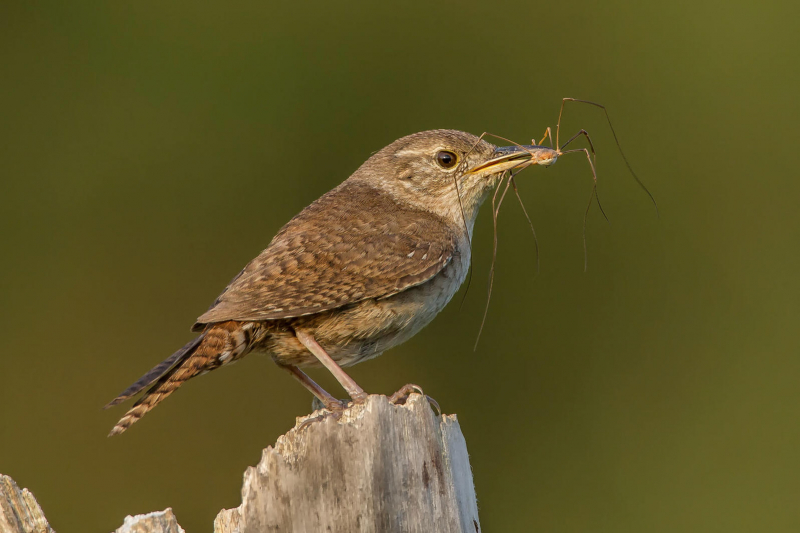
Audubon Rockies - National Audubon Society -
The Eurasian Tree Sparrow (Passer montanus) is a passerine bird in the sparrow family with a rich chestnut crown and nape, and a black patch on each pure white cheek. The female and male birds have comparable plumage, while juvenile birds have a duller appearance than adults. The Eurasian tree sparrow or German sparrow is used to distinguish it from the native, unrelated American tree sparrow. This sparrow breeds throughout the majority of temperate Eurasia and Southeast Asia, where it is known as the tree sparrow. It has also been introduced to other countries, including the United States. Although multiple subspecies are recognized, this bird's look is largely consistent throughout its wide range.
The Eurasian tree sparrow's untidy nest is built in a natural cavity, a hole in a building, or the disused nest of a European magpie or white stork. Five to six eggs make up the average clutch, and they hatch in less than two weeks. Although invertebrates are frequently devoured, especially during the breeding season, this sparrow primarily eats seeds. The usual life span is about two years, and like other small birds, it is shortened by parasite and disease infection, predatory birds of prey, and other factors.
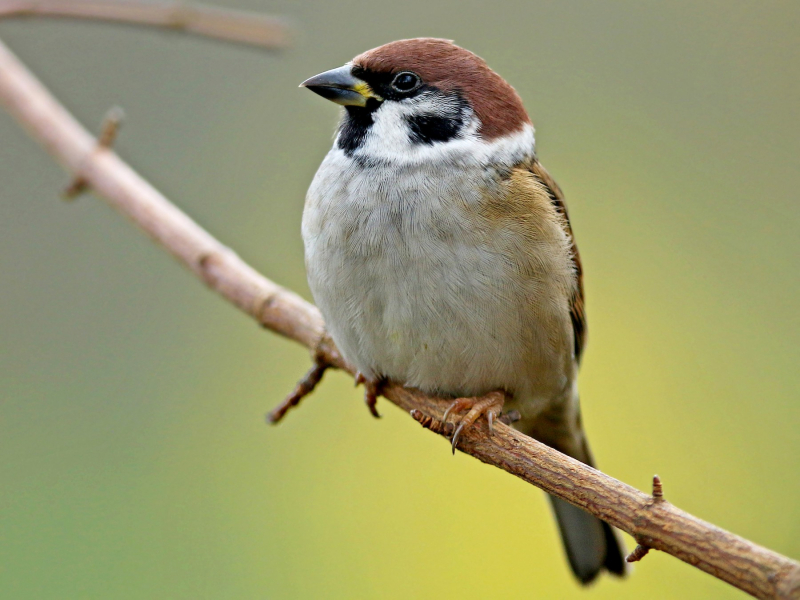
eBird 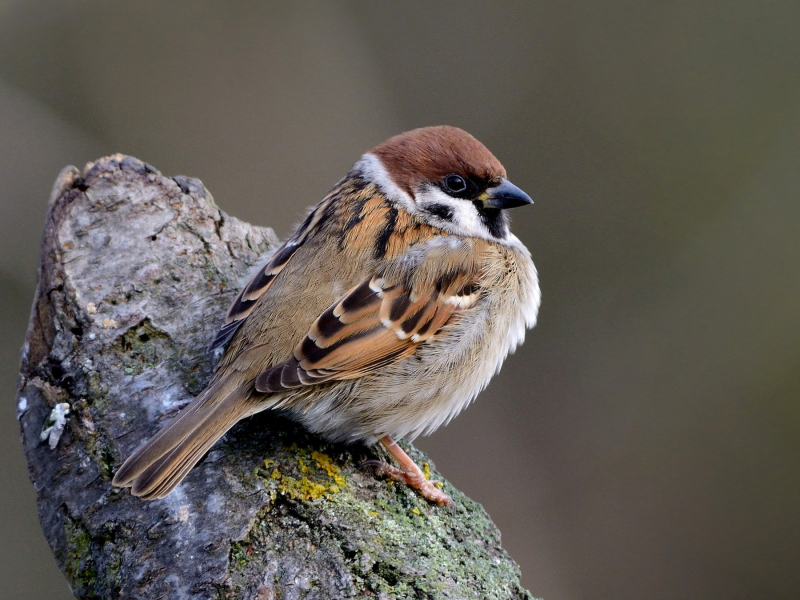
eBird -
Harris's Sparrow (Zonotrichia querula) is a large sparrow. The only endemic breeding bird in Canada, its breeding territory is the northern region of central Canada, predominantly the Northwest Territories and Nunavut, with a little range into northern Manitoba and Saskatchewan. From middle Texas to southern South Dakota, they migrate to the American Great Plains states for the winter. The common name of this species is in honor of American amateur naturalist Edward Harris (1799–1863).
This species has a very unusual appearance. Breeding birds' distinctive pink bills stand out against their black crowns, faces, throats, and upper breasts, which are contrasted with grey on the sides of the head and neck. Brown with thick black streaks covers the back. Two white wing bars are present. Breeding birds have black mottling on their sides and white lower underparts. Adults who are not reproducing have more buffy coloring than grey and brown, fewer or no black markings, and frequently have whitish scalloping on their heads and throat. Adult plumage is more black than that of immatures, which are typically distinguished by a white chin and throat, a black malar stripe, and a wide, smudgy black breast band. Juveniles have a brownish crown streaked with black and fine dark streaks and some broader black markings on the underside.
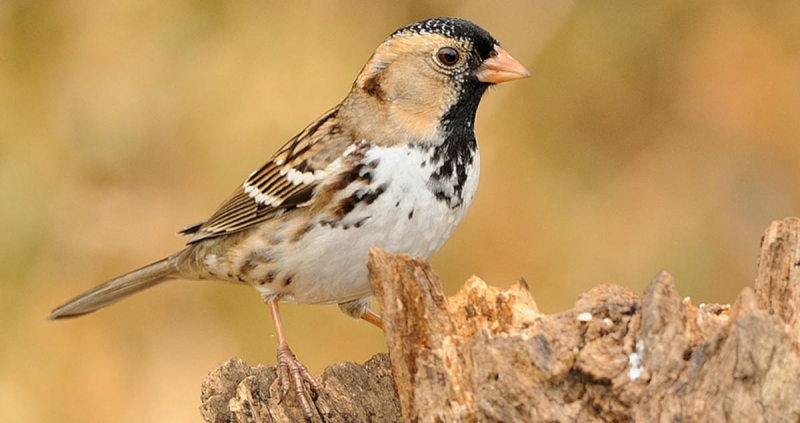
All About Birds 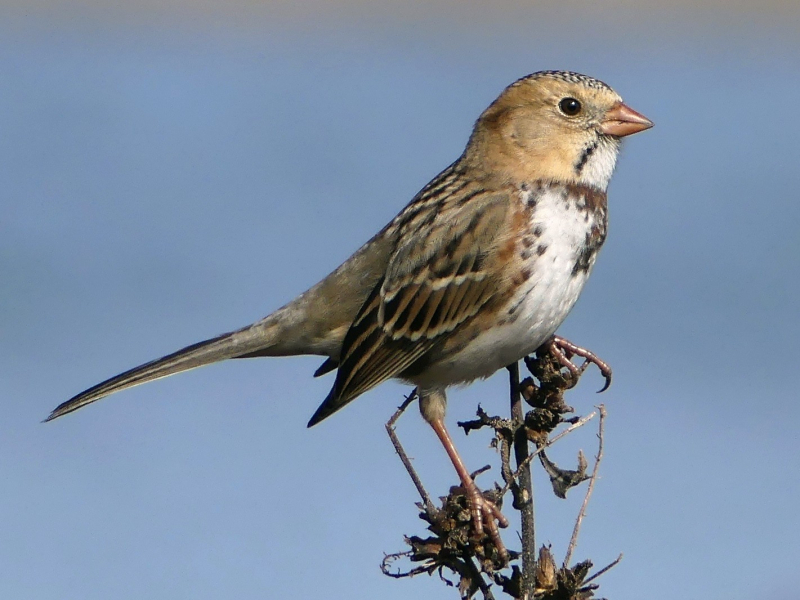
eBird -
The Song Sparrow (Melospiza melodia) is a medium-sized new world sparrow. Among the native sparrows in North America, it is easily one of the most abundant, variable, and adaptable species. These birds hunt for food on the ground, under bushes, or in very small bodies of water. They primarily eat seeds and insects. Small crustaceans may also be consumed by birds in salt marshes. They build their nests in trees or bushes or in a protected area on the ground. Song sparrows have higher overwinter survival rates and reproductive success when there are shrub cover areas in their region away from the intertidal beach.
Adult song sparrows have white underparts with dark striping and a dark brown mark in the middle of the breast, with brown upperparts and dark streaks on the back. They have a long, rounded brown tail and a brown cap. Each of their eyes has a brown streak running through a grayish face. They come in a variety of sizes across different subspecies (for subspecies details, see below). The eggs of the song sparrow are brown with greenish-white spots. Females lay three to five eggs per clutch, with an average incubation time of 13–15 days before hatching.
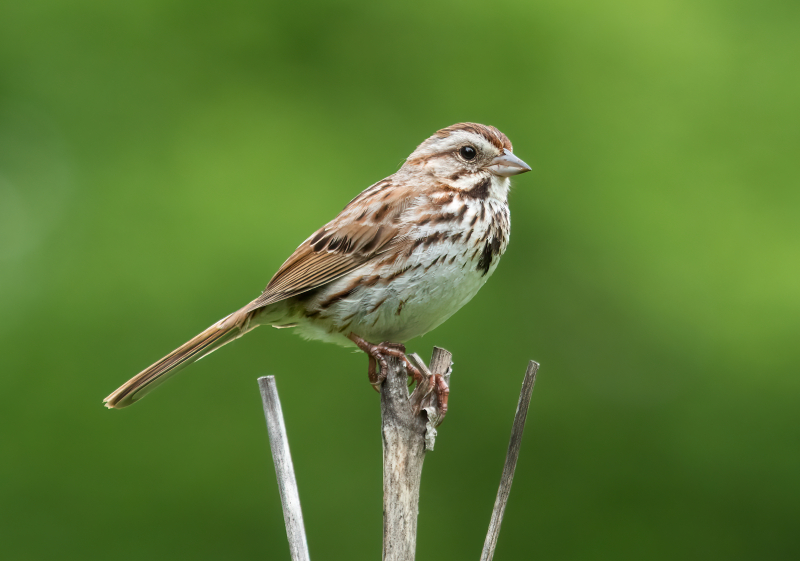
Wikipedia 
eBird -
The White-Crowned Sparrow (Zonotrichia leucophrys) is a species of passerine bird native to North America. A medium-sized member of the new world sparrow family, this species is marked by a grey face and black and white streaking on the upper head. In the taiga and tundra in the far northern regions of the continent, as well as in the Rocky Mountains and along the Pacific coast, it breeds in brushy habitats. The breeding populations in the northern half of its range are migratory and can be found as wintering or passage visitors over most of North America south to central Mexico, in contrast to the southerly populations, which are primarily resident in the Rocky Mountains and along the coast.
Adults have a long tail, a gray face, brown streaked upper parts, and black and white stripes on their heads. The underparts are gray, while the wings are brown with bars. They have a pink or yellow bill. They resemble the white-throated sparrow in terms of appearance but lack its white throat markings and golden lores.
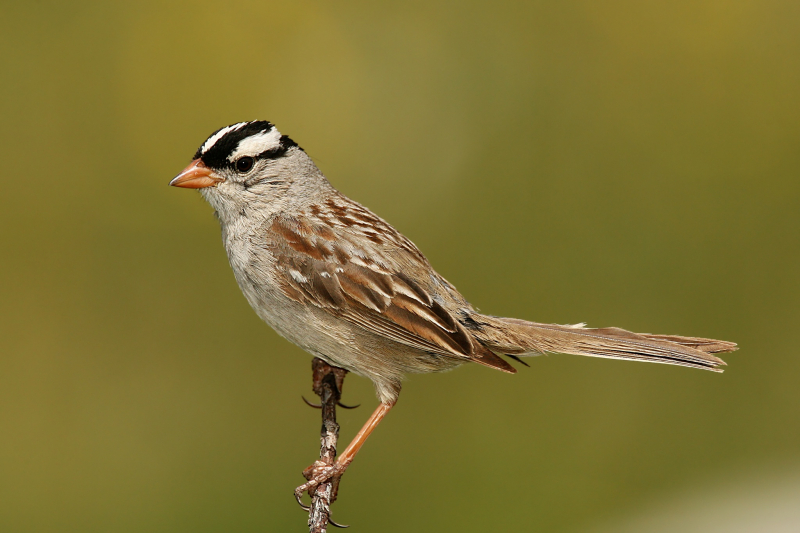
Wikipedia 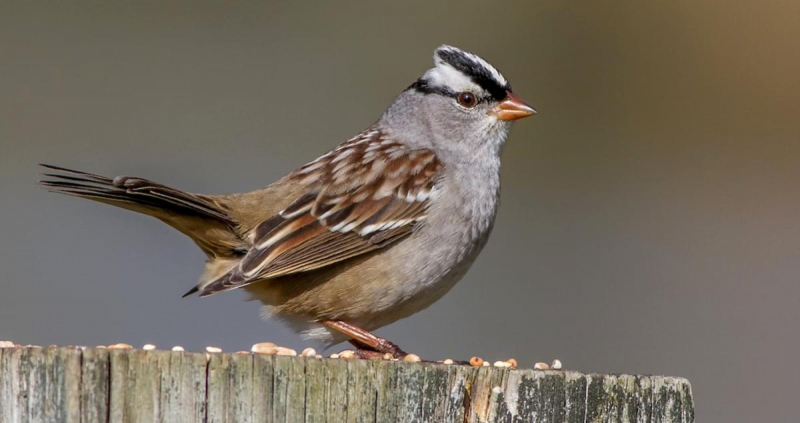
All About Birds












